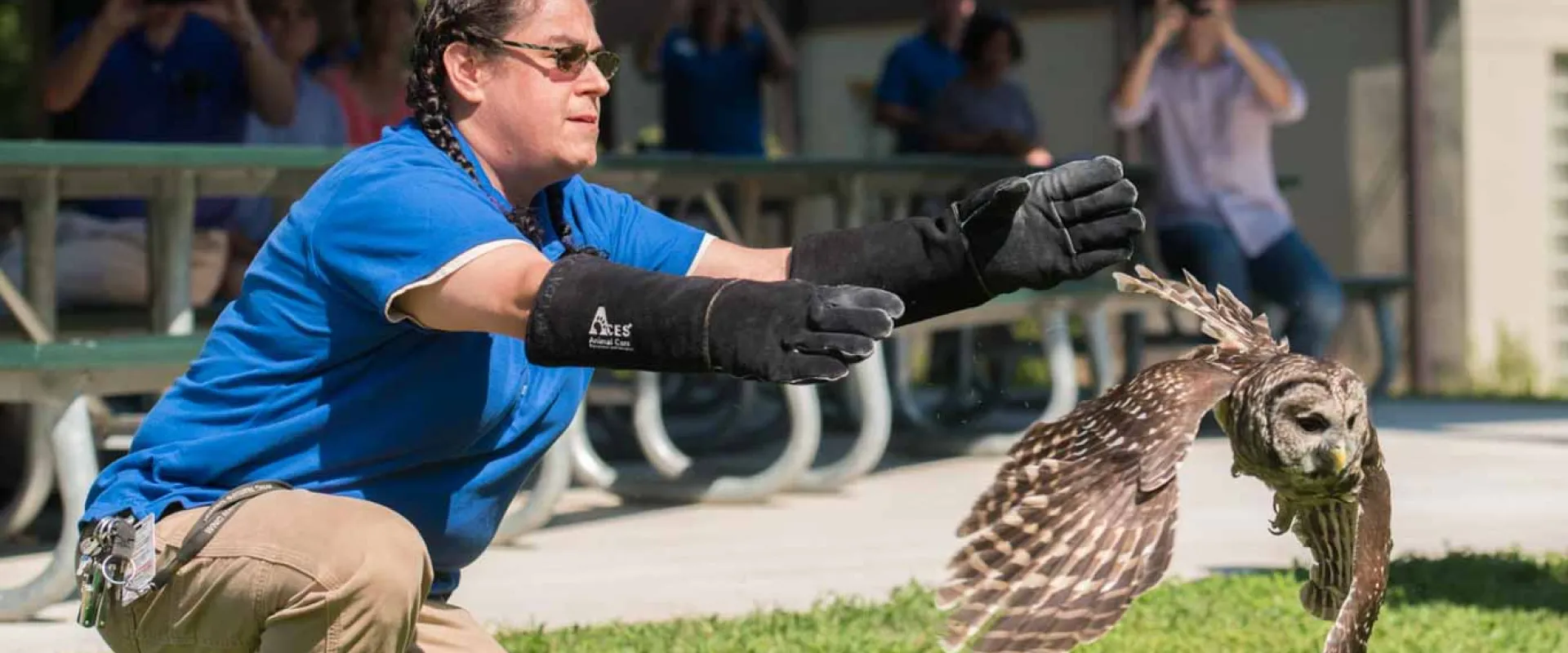Recognizing the Demand for Animal Control Burlington in Urban Environments
Wiki Article
Common Difficulties and Solutions in Urban Wild Animals Removal Initiatives
Urban atmospheres present distinct challenges for wildlife monitoring experts tasked with getting rid of or handling wildlife populations. These difficulties usually converge with moral factors to consider, lawful structures, and the safety of both humans and animals. Public resistance and misunderstandings additionally complicate these efforts, requiring innovative, non-lethal services and robust community outreach. Understanding the complexities involved in city wild animals elimination is vital for establishing methods that balance human safety with wildlife well-being. What approaches have confirmed most efficient, and exactly how can communities be much better involved to support these efforts? This discourse seeks to uncover the intricate balance required for effective metropolitan wildlife management.Moral Wild Animals Management
Addressing the intricacies of ethical wild animals management calls for a balance in between human rate of interests and the conservation of wild animals environments. In urban settings, this balance ends up being increasingly tough as human growth encroaches on wild animals habitats, leading to frequent human-animal communications. Ethical wildlife administration in these environments needs techniques that focus on humane therapy of pets while alleviating potential disputes.One of the core principles in ethical wild animals monitoring is the prevention of harm. This includes using non-lethal techniques for wildlife removal, such as exemption techniques that stop pets from entering human residences, or using deterrents that direct them far from metropolitan areas. Wildlife experts are entrusted with utilizing approaches that reduce stress and anxiety and injury to the animals, ensuring their welfare is thought about together with human security.
In addition, moral monitoring requires informed decision-making based on clinical study and ecological understanding. It is important to evaluate the ecological duties of city wild animals and just how their elimination may affect regional biodiversity. Experts should also take part in public education, cultivating a more comprehensive recognition of conjunction methods and highlighting the significance of preserving natural environments. Inevitably, efficient ethical wildlife monitoring entails partnership between conservationists, policymakers, and the general public to maintain metropolitan environments.
Navigating Lawful Limitations
Navigating the lawful landscape of urban wild animals removal offers a complicated layer to the currently difficult task of ethical wild animals administration. Lawful limitations are essential in ensuring that wildlife is dealt with humanely and environments are maintained. These legislations differ considerably throughout regions, demanding complete understanding and compliance from those included in wild animals management. Rules frequently define permissible techniques of elimination, protected types, and licensure needs, thus forming the techniques used by specialists.One significant obstacle is the constant evolution of these legislations, usually driven by ecological changes and societal mindsets in the direction of wildlife preservation. Because of this, specialists have to remain enlightened regarding current legal requirements and upcoming legislative modifications. Non-compliance can lead to considerable charges, legal ramifications, and reputational damages.
Building connections with wildlife firms and legal specialists can supply valuable understandings and assistance. Hence, understanding and adhering to legal structures is not merely a step-by-step requirement yet an essential component of lasting and accountable city wildlife monitoring.

Safety And Security in Removal Practices
Guaranteeing security in wild animals removal techniques is vital to protecting both human and animal welfare. A key worry in wild animals removal is the capacity for injury or illness transmission to human beings, requiring the use of individual protective tools (PPE) such as goggles, masks, and handwear covers.
Safe elimination methods also include the usage of humane catches developed to stop injury. These catches must be on a regular basis kept an eye on to ensure that animals are not left in distress. In addition, it is vital to stick to guidelines that determine the appropriate handling, transportation, and launch of captured wild animals, making certain that the animals are gone back to ideal habitats where they can prosper without posing additional threats to urban atmospheres.
Moreover, education and learning and training for those involved in wild animals elimination are essential. This makes sure that all events are aware of the most up to date safety protocols and methods, therefore decreasing the probability of crashes and advertising a harmonious coexistence between metropolitan residents and wildlife.
Cutting-edge Deterrent Solutions
While safety and security in wildlife removal is important, stopping experiences with city wild animals via cutting-edge deterrent solutions can considerably decrease the requirement for such interventions. Urban atmospheres, with their abundance of food and shelter, typically draw in wild animals like raccoons, squirrels, and pigeons, leading to potential problems. Advancements in modern technology and Bonuses layout have actually led the way for innovative and effective deterrent approaches that decrease wild animals existence without damage.One such service is the use of ultrasonic devices, which emit site here high-frequency sounds faint to people however unpleasant for numerous wild animals types, driving them away from specific areas. In addition, motion-activated lawn sprinklers can discourage animals by startling them with abrupt ruptureds of water, efficiently discouraging their return. These tools are specifically beneficial in safeguarding yards and eco-friendly spaces from foraging pets.

Moreover, the combination of smart illumination systems that adjust their brightness and color can interrupt the nighttime activities of specific wild animals, minimizing their comfort in city settings. Physical obstacles, such as bird spikes and nettings, continue to serve as practical deterrents, stopping animals from nesting or roosting in unwanted locations. Highlighting humane and environmentally friendly methods, these innovations hold pledge for lasting urban wild animals management.
Neighborhood Education Efforts
Recognizing the significance of neighborhood education initiatives is vital in attending to urban wild animals challenges properly. Such initiatives play a considerable function in promoting conjunction between people and wildlife in metropolitan settings by elevating recognition and advertising liable actions. Enlightening residents about local wildlife varieties, their environments, and actions can lower misconceptions and fear, leading to more enlightened choices pertaining to wild animals administration.Neighborhood education efforts frequently include workshops, workshops, and outreach programs made to involve citizens of all ages. These initiatives can concentrate on practical suggestions, such as safeguarding waste containers, installing bird-friendly structures, and staying clear of feeding wild animals, which assists prevent bring in pets into urban locations. By distributing knowledge about the eco-friendly functions of wildlife, areas can move point of views from viewing pets as annoyances to recognizing their worth within metropolitan communities.
Residents who recognize the significance of wild animals conservation are more likely to sustain gentle removal methods and environment defense measures - animal control Burlington. Efficient neighborhood education and learning calls for collaboration between regional authorities, wild animals specialists, and community leaders to develop tailored Learn More Here programs that attend to details urban wildlife problems.
Verdict
Urban wildlife removal needs a diverse strategy, addressing honest monitoring, lawful conformity, and safety and security in removal practices. Employing innovative deterrent options and focusing on non-lethal techniques are critical for mitigating human-wildlife dispute. Neighborhood education and learning efforts play a considerable role in altering perceptions and encouraging coexistence by promoting an understanding of wild animals actions and decreasing attractants. Successful metropolitan wildlife management pivots on cooperation amongst authorities, locals, and professionals, making sure methods that protect human safety while valuing wild animals welfare.Urban environments present one-of-a-kind challenges for wild animals monitoring experts entrusted with removing or handling wildlife populaces. Understanding the complexities included in urban wildlife removal is crucial for establishing methods that stabilize human safety with wildlife well-being.Browsing the lawful landscape of urban wildlife elimination offers an intricate layer to the already difficult task of honest wild animals management.While security in wild animals elimination is essential, avoiding encounters with metropolitan wild animals with cutting-edge deterrent remedies can significantly decrease the requirement for such interventions. Successful metropolitan wild animals monitoring pivots on cooperation amongst authorities, homeowners, and experts, making sure methods that secure human security while appreciating wildlife welfare.
Report this wiki page